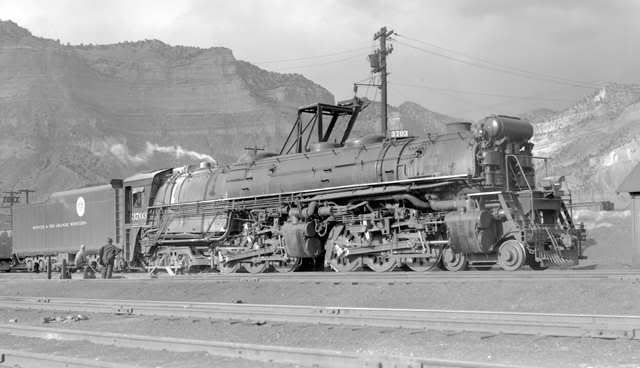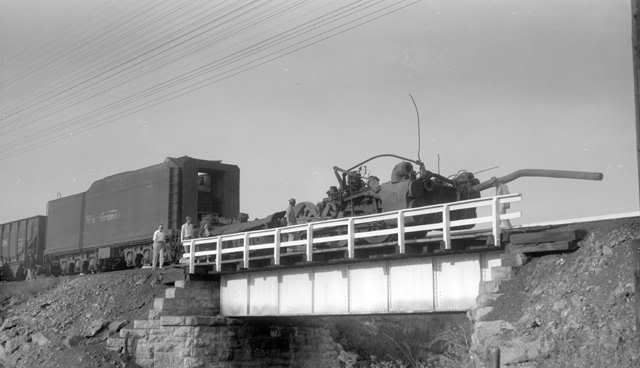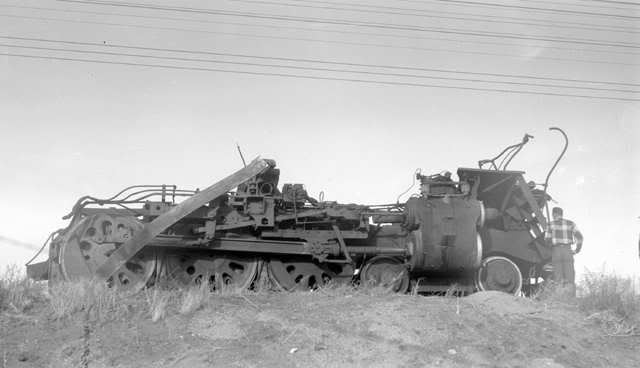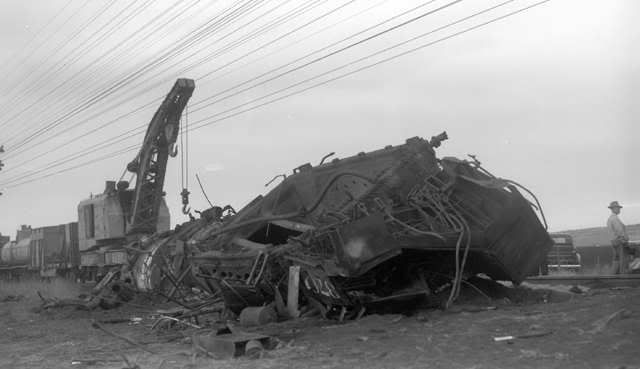Page 5 of 5
Posted: Sun Apr 27, 2008 7:53 pm
by Acdcmonkey1991
Ragnarok wrote:DYI wrote:Does anyone know the speed of sound in 700 degree F steam?
Around 615 m/s (2020 fps), although I didn't have an exact ratio of specific heats for steam at that temperature, but it would seem to be around 1.29.
Unfortunately, I can't find my book of steam tables, or I'd give you a more accurate answer.
If you look at the first page I gave a formula for the exact speed of sound at the pressure and temperature that DYI wants to use
Posted: Sun Apr 27, 2008 8:43 pm
by Lentamentalisk
Could you possibly be a tad more selective in your quoting? For example, you could have shortened your screen long response to:
LikimysCrotchus5 wrote:
Ahh forgive me. I was paying attention, but im just too used to Fahrenheit, because its what i commonly use, like the whole U.S.

I meant Celsius, just as the others obviously thought of.
If you look at the first page I gave a formula for the exact speed of sound at the pressure and temperature that DYI wants to use.
edit: Oh wait, that actually took you 2 full screens to write 2 lines...
Posted: Sun Apr 27, 2008 9:01 pm
by starman
D_Hall wrote:
No, it doesn't have advantages over a log. You threw it out there because it's a "gee whiz" solution and you thought it would sound cool. The realities of thermite are obviously beyond you or you'd have never thrown it out there to begin with.
OK, I just caught this comment....a little slow on the uptake tonight.... Caught me funny is all...

I liked the whole log advantages part...

Posted: Mon Apr 28, 2008 6:52 pm
by clide
Acdcmonkey1991 wrote:Ragnarok wrote:
Around 615 m/s (2020 fps), although I didn't have an exact ratio of specific heats for steam at that temperature, but it would seem to be around 1.29.
Unfortunately, I can't find my book of steam tables, or I'd give you a more accurate answer.
If you look at the first page I gave a formula for the exact speed of sound at the pressure and temperature that DYI wants to use
I'm not sure where that formula came from, but it looks like it may be derived from the equation for the speed of sound in an ideal gas.
My tables don't have the necessary properties to calculate the speed of sound with the general (non-ideal gas) equation, but I did find a calculator:
http://twt.mpei.ac.ru/MCS/Worksheets/WSP/WPT-US.xmcd
It shows a pretty low number ~1400 fps, still faster than the speed of sound in air, but not by as much as I would have expected.
Edit: Looks like you can increase it significantly by getting it farther away from the saturation point. So if you are going to fix your maximum temperature at 700 F, you may actually get more performance by decreasing the pressure if you are near the speed of sound in the steam. Completely counterintuitive, but if that calculator is right then it is something you should probably test if you actually get this thing built.
Posted: Tue Apr 29, 2008 4:20 pm
by Acdcmonkey1991
clide wrote:
I'm not sure where that formula came from, but it looks like it may be derived from the equation for the speed of sound in an ideal gas.
My tables don't have the necessary properties to calculate the speed of sound with the general (non-ideal gas) equation, but I did find a calculator:
http://twt.mpei.ac.ru/MCS/Worksheets/WSP/WPT-US.xmcd
It shows a pretty low number ~1400 fps, still faster than the speed of sound in air, but not by as much as I would have expected.
Edit: Looks like you can increase it significantly by getting it farther away from the saturation point. So if you are going to fix your maximum temperature at 700 F, you may actually get more performance by decreasing the pressure if you are near the speed of sound in the steam. Completely counterintuitive, but if that calculator is right then it is something you should probably test if you actually get this thing built.
Wikipedia

I got the density of the steam from some random website
I just chucked the numbers into the formula and...kazaam, 1800 fps speed of sound in steam at 700 degrees
Re: HP steam cannon
Posted: Wed Apr 30, 2008 4:14 am
by SpudMonster
Ragnarok wrote:600 tons is feasible for a locomotive. The heaviest I can think of, although bearing in mind, I am hardly an expert on US locomotives - is the Big Boy locomotives, which did weigh around 600 tons.
But thinking further, it does sound a little improbable (although by no means am I implying you are lying) that a fireless locomotive "exploding" would throw a loco that large 30 yards. Perhaps the story has grown a little in the telling.
judgment_arms wrote:This blast was caused by the fireman forgetting to fill the water tank before lunch, the water level dropped below the top of the firebox and the fire weakened it to the point of failing: KA-BOOOM!!!
Also sounds a little odd, given that usually if something went wrong like that, the copper firebox would fail before the steel boiler walls.
...Actually, I'm surprised I know/remember all that. Mind you, I used to be something of a steam engine nut, so it's not completely unexpected.
Fellow steam nut checking in here to clear up a few misconceptions/unclear things.
Yes Ragnarok, the Big Boy was one of the largest locomotives ever made. As far as I know, America made the biggest locomotives in the world by a long shot. However, it was not the heaviest ever made. That honor goes to the Allegheny type locomotives made for the Chesapeake and Ohio. They weighed between 754,000 and 775,000 pounds. The Matt H. Shay, an unsuccessful "triplex" locomotive (also the largest tank engine ever made in the sense that it had no tender) weighed over 853,000 pounds.
I kind of doubt that little porter would be able to level 2 acres and throw a large locomotive 30 yards. The story has likely seen a bit of embellishment, but steam is pretty powerful shit nonetheless.
As for the copper firebox failing, U.S. locomotive style boilers (to the best of my knowledge. There may have been one or two experiments I am unaware of) never had the stayless copper fireboxes of british boilers. In the case that Judgment_arms is describing, the boiler's crownsheet (top of the firebox) became exposed, due to the water level dropping far below the operating range. The fusible plug should have melted and extinguished the fire, but apparently it did not. Subsequently, the sheet overheated, got soft, and failed. It doesn't really matter that the shell, barrel, wagon top, or any outside part of the boiler didn't get damaged, the steam pressure is going to do some major damage regardless. Also, with the crownsheet gone, the boiler has just lost a major structural element. Because of this, it can fail completely. This is why any fireman worth two shits will be obsessive to the point of madness about making sure the boiler is always full to the proper level.
This is what happens when something major goes awry. This was a 4-6-6-4 Challenger type locomotive operated by Union Pacific




Re: HP steam cannon
Posted: Wed Apr 30, 2008 6:33 am
by Ragnarok
SpudMonster wrote:However, it was not the heaviest ever made. That honor goes to the Allegheny type locomotives.
Curses - I had known about the Allegheny locomotives, that just didn't come to mind.
As for the copper firebox failing, U.S. locomotive style boilers never had the stayless copper fireboxes of british boilers.
The boiler's crownsheet (top of the firebox) became exposed, due to the water level dropping far below the operating range. The fusible plug should have melted and extinguished the fire, but apparently it did not.
Subsequently, the sheet overheated, got soft, and failed.
My mistake in assuming the US locomotives were structurally similar, but larger - I've never really studied them in any detail.
However, the fusible plugs were never intended to extinguish fires. They were intended as a warning - when melted, they just made a very loud whistling noise to alert crew to the danger.
They had no part in actually quenching the fire. In fact, a locomotive could be run for some while (after the boiler had been re-filled) with a melted fusible plug.
Posted: Fri May 02, 2008 9:38 pm
by SpudMonster
I beg to differ...
http://www.steamtraction.com/archive/5424/
Kuss' explanation seems to be the more plausible: "It does not necessarily follow that a hole -inch or -inch in diameter will liberate steam fast enough to prevent excess pressure. If, however, the quantity of escaping steam and water is considerable, combustion will be retarded and the fire will be partly extinguished."
Posted: Sat May 03, 2008 2:46 pm
by Ragnarok
If, however, the quantity of escaping steam and water is considerable, combustion will be retarded and the fire will be partly extinguished."
That's not my understanding.
As a fusible plug can only get hot enough to melt once the water level has dropped below it (or else, heat is drawn off) - water will not escape through it in any real quantity. Water won't flow uphill.
I'll admit myself to having once believe that's how they worked, but I've since had it explained to me by a fireman on a restored steam railway, and I have to admit, his explanation makes sense.
Posted: Sat May 03, 2008 3:34 pm
by SpudMonster
Water won't flow uphill, but it will be blown uphill. Proper procedure for operating try-cocks is to crack them off their seats slightly, not open them all the way. This is because if they are opened all the way, they can and do give a false reading because the water in the boiler is getting "Sucked" (relative to the pressure inside) out the try-cock. It's just like when an engine primes. Naturally the water level isn't anywhere near the main steam line or even the top of the boiler barrel, but the demand for steam in an immense volume is causing water to stay suspended in the steam and forced through the line. The steam is moving so quickly through the boiler that there isn't enough time for the water to settle out. Also, the boiling action of the water causes the surface water to be disturbed, so there is definitely going to be suspended water in the steam.
Also, I can't imagine how a 1/4" hole blowing steam (and potentially water) at 150-200 PSI WOULDN'T have an effect on a fire, either through oxygen starvation due to the firebox filling with steam and displacing the air, or water getting carried over.
Posted: Sat May 03, 2008 4:28 pm
by Ragnarok
SpudMonster wrote:Also, I can't imagine how a 1/4" hole blowing steam (and potentially water) at 150-200 PSI WOULDN'T have an effect on a fire
I didn't say it wouldn't have some effect
(oh wait, I did, disregard my comment in April's post, poor wording.), but my understanding is that it wouldn't be sufficient to extinguish or cool the fire enough to avert disaster.
There's going to be little volume of water coming through. They aren't that large in bore.
Even if the water coming through were a continuous stream (which it wouldn't be), it would be little different to turning a high power garden hose on to a specific corner of the fire - which isn't going to put out a fire with a mass of thousands of pounds of coal.
Anyway, it's not worth an argument over. If we really need to know, I'll nick a steam engine next week and try it out.



